How balalaika appeared in Russia and why the church forbade them
Categories: History
By Pictolic https://pictolic.com/article/how-balalaika-appeared-in-russia-and-why-the-church-forbade-them.htmlEvery nation has its own musical instruments. The Japanese have shamisen, the Americans have banjo, the Scots have bagpipes, the Ukrainians have bandura, and the Russians, of course, have balalaika. Abroad, the stereotypical image of a Russian stands, in an earflap and with a balalaika. Indeed, this three-stringed plucked instrument is inseparable from Russia. But was it invented by our ancestors? Or was it borrowed from somewhere?

The uniqueness of the balalaika lies not in its shape or history, but in its sound. It is not loud, sonorous, but at the same time very melodious. Despite the fact that the instrument has only three strings, a skilled musician can play quite complex compositions on the balalaika. By pinching the strings on the frets with his fingers, the performer extracts the sound by both blows and pinching.
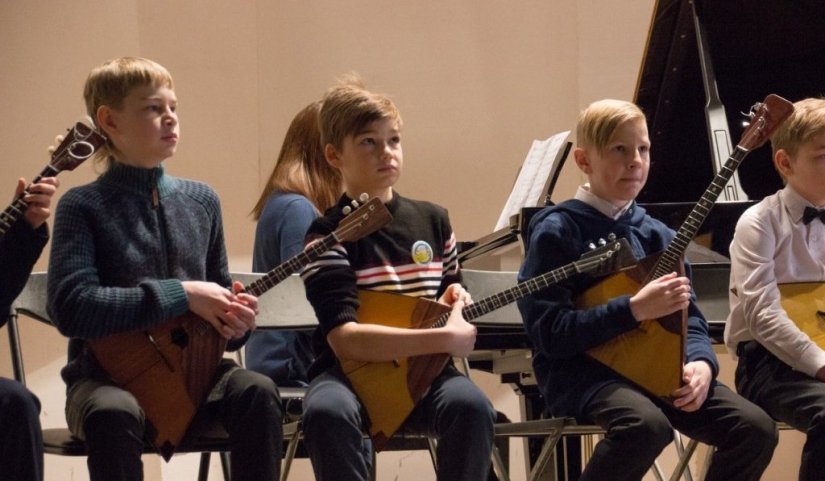
The balalaika is set up in a special way. The note "mi" of the first octave is extracted from the two lower strings. But the upper string is tuned a quart higher and gives out the note "la". From the outside it seems that the balalaika is a very simple tool. But this is not the case. The classic version consists of 70 parts!
Pine wood is used as the main material for balalaika. The length usually does not exceed 60-70 cm, although there are also large tools. Not all balalaika are triangular — there are also round models. The manufacture of balalaika has its own subtleties and secrets, so at all times there were famous masters who knew the price for themselves and their products.
To trace the history of the balalaika from its appearance, alas, will not work. It was too long ago and information about the inventors and the first models could not be found. It is known for sure that this tool is alien and the Russians have several versions about its appearance.

A significant part of experts tend to believe that balalaika came to us together with the Mongol-Tatar invasion from the East. Another hypothesis is connected with the medieval Arab scientist and cartographer Ahmad ibn Fadnal. According to legend, the eastern guest explored the Volga region and met Russian merchants. The Arab showed them his favorite stringed instrument, and then even gave it to them.
So the balalaika could get to the Russians. But this plausible story has several serious drawbacks. Firstly, in his notes ibn Fandal told about a meeting with Vikings in Volga Bulgaria. Secondly, the Arab traveled in the 10th century, and the first information about balalaika dates back to the 17th century. And thirdly, there is no guarantee that it was not some other stringed instrument.
There are serious reasons to believe that the ancestor of the balalaika was domra. They have long been played by buffoons during their performances. But then the church banned musical numbers. The fact is that amateur artists often got drunk in pubs and performed seditious songs, sometimes about clergymen. In the 17th century, buffoons began to be "treated" with a whip from "shameful chants", and domras were seized and destroyed.
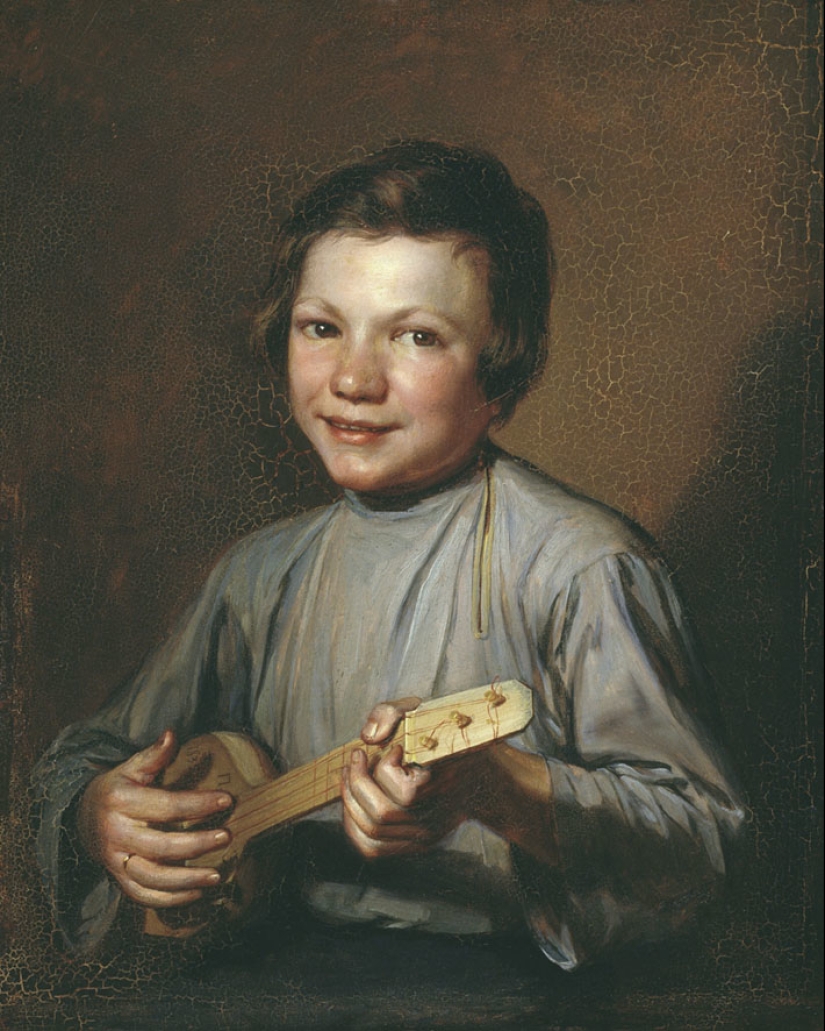
Domr's "demonic instrument" was expensive, complex and cumbersome. Therefore, the artists came up with a simplified version, which was not particularly pitiful. Moreover, the music for the entertainment of honest people was uncomplicated and a small three-stringed instrument was enough with a head.
For the first time the word "balalaika" appeared in the annals of Muscovy in the 17th century. Later, she was often mentioned both in serious documents and in folklore. The balalaika has a common root with "joking" and "babbling", that is, talking quickly and without stopping. It seems to us that this is a perfect fit for a folk Russian instrument. Almost all melodies for balalaika are light, strumming entertaining melodies.
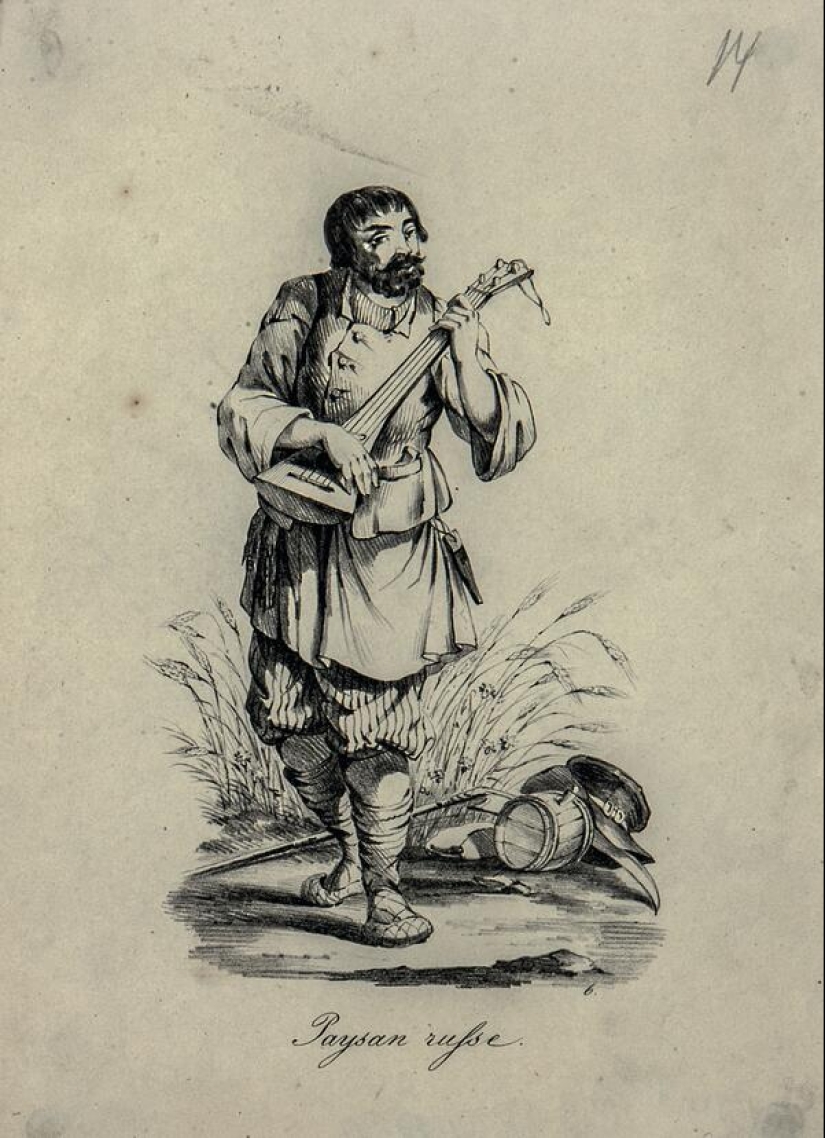
The Turkic version of the origin of the word is also popular. Some linguists find the origins of the "balalaika" in the Tatar language. There is the word "bala", meaning a child. Maybe "balakat" and "babble" originated from there and are associated with meaningless children's chatter?
Now it is difficult to say how and who came up with the word "balalaika". But already at the beginning of the 18th century, the instrument was considered to be native Russian, national. The balalaika was a constant participant in all weddings, festivities and feasts, and no one even thought to look for its origin in other countries.
At the beginning of the 19th century, the attitude towards the balalaika changed dramatically. Gradually, it began to lose prestige and by the 1850s it began to be considered a plebeian instrument. Professional musicians spoke down about balalaika and claimed that everyone can "strum" on three strings. In high society, the instrument began to be treated with contempt and soon characteristic melodies could be heard only in peasant huts.
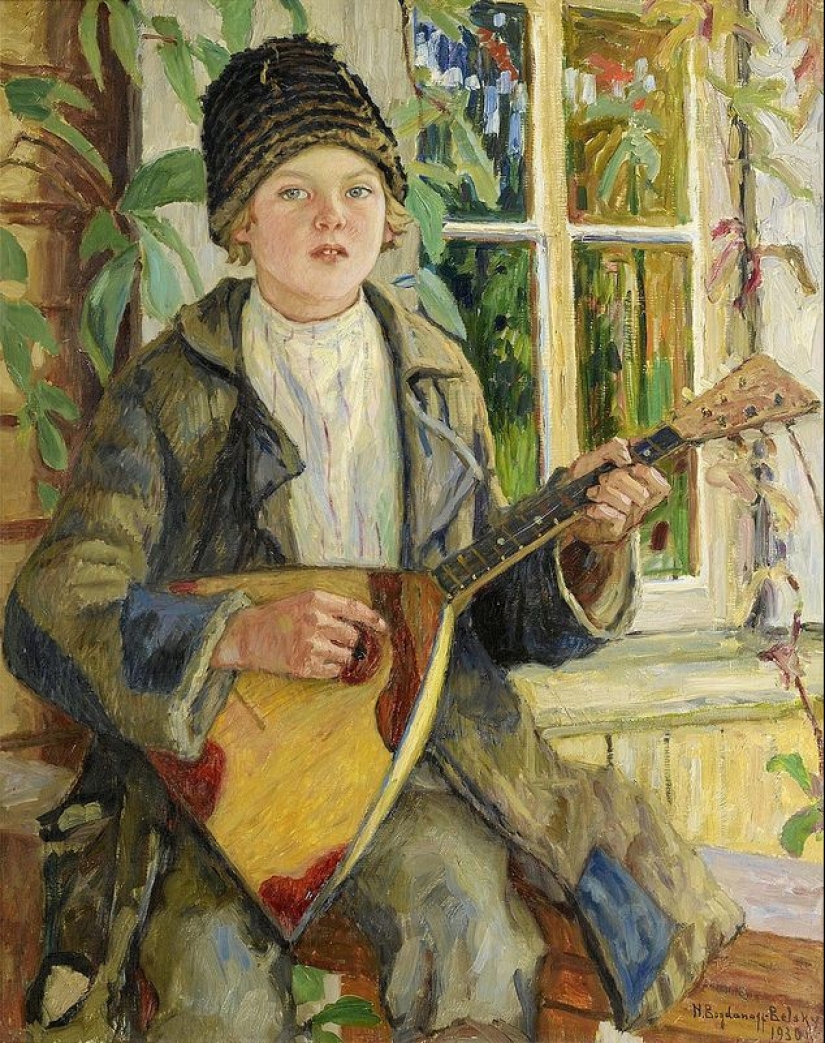
Undoubtedly, harps, clarinets, pianos and even guitars looked more solid and offered a better sound. Balalaikas were barred from joining orchestras and the big stage in general. However, occasionally ensembles of virtuoso balalaika players appeared on tour. But they were called nothing but "musical clowns" and their performances were not considered art.
The decline of the Russian stringed instrument has led to the fact that even among the peasants, the balalaika has become rare. A person with her was immediately recorded as a frivolous person. And why not, because a serious man should work, not strum. Maybe the balalaika would have disappeared altogether if not for the small but talented enthusiasts.
The Russian composer and virtuoso balalaika player Vasily Vasilyevich Andreev set out to rehabilitate the balalaika in the 1880s. The musician was only 22 when he started "putting a balalaika in a tailcoat" and Andreev spent five years on this case. First of all, he developed drawings of a "classic" balalaika with excellent sound.
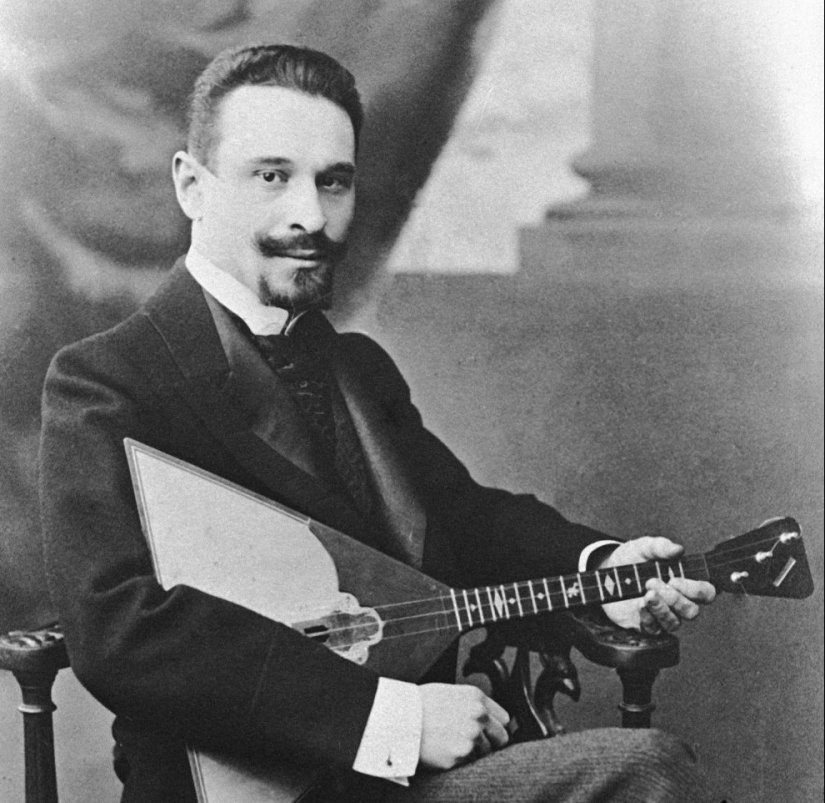
In 1887, the master Franz Paserbsky made the first chromatic balalaika according to Andreev's drawings. This is the same well-known design with a triangular body and a spike mechanism. High-quality vein strings were selected, with which the instrument sounded softly. In the same year, Russia's first self-taught balalaika game was published.
Andreev himself gathered a circle of amateur balalaika players. Soon it turned into a full-fledged class of playing folk musical instruments in the Pedagogical Museum. On March 20, 1888, Vasily Vasilyevich's wards were waiting for the first resounding success. The performance in the hall of one of the St. Petersburg societies made a real sensation. On this day, the Russian Folk Orchestra of V. Andreev was born, famous all over the world. He was even invited to speak at the Paris Exhibition!
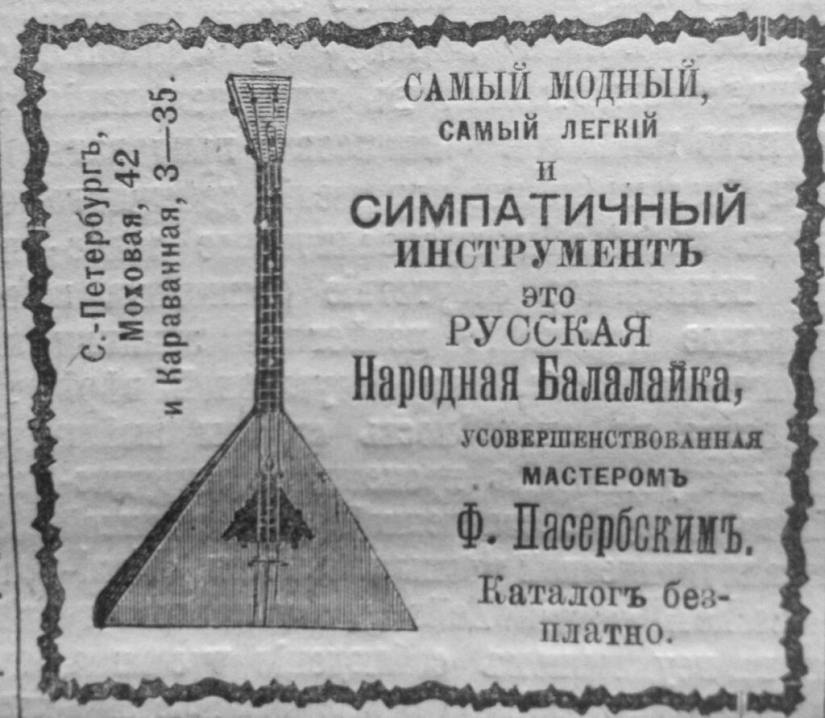
The balalaika finally broke into the world of academic music. The game of the Russian folk instrument began to be taught in music schools and universities, publishing houses began to produce educational and methodological literature. Separate pieces of music have been written and are being written for the balalaika: sonatas, suites and concerts. The instrument was also noted on the pop stage.
Now, in the 21st century, the balalaika is still popular. Virtuosos manage to play even classical works written for piano, cello and violin on it. Fortunately, the balalaika has survived all the hardships and persecution, stayed with us, develops and wins new fans.
Recent articles

Always interesting to learn or discover something new and interesting. The thirst for knowledge and curiosity is what animates our ...

I bet you've had a dream at least once in which your teeth fall out. This is one of the most popular queries in search engines and ...

Everyone knows that annoying advertising letters sent by email are called spam. But few people thought about what this word means ...